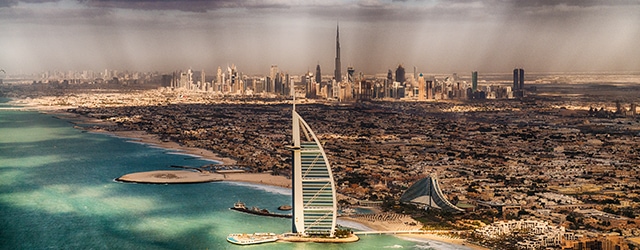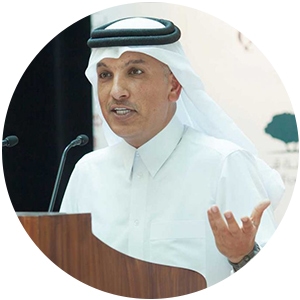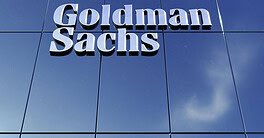The need for economic diversification has never been greater, as governments around the Gulf look to shore up oil-depleted revenues and boost job prospects for their fast-growing populations.


The Middle East has faced numerous economic and political challenges in the last few years, but to its credit, it has weathered them reasonably well. That is due in part to the considerable oil wealth that characterizes countries throughout the region; although lower oil prices in the last two years have significantly impacted fiscal revenues, particularly in the larger more-oil-dependent economies such as Saudi Arabia.
The price of oil is expected to remain subdued, at least over the short to medium term. Therefore, GDP growth for regional economies this year will remain moderate. Moreover, better and more-resilient growth going forward will depend on the expansion of non-oil sectors. Economic growth in 2017, and over the next five years, will be supported by government-driven infrastructure projects, as Middle East economies focus on using their oil wealth to diversify domestic economies.
The importance of oil in the region cannot be understated. In the kingdom of Saudi Arabia, oil constitutes 43% of GDP. In Kuwait, 63% of GDP comes from oil, in Qatar 51%, Iraq 47% and the UAE 34%. Despite most of the region’s governments focusing on building other sectors of the economy, the non-oil private sector currently remains small. Up till now it has been a limited driver of growth and employment.
The main sources of manufacturing in the Middle East tend to include refinery, chemical and extractive industries—activities that are closely connected to the oil industry. In addition, some non-oil sectors, such as the construction sector, depend heavily on government contracts. Some countries, such as the UAE, have made more progress than others in diversifying their economies. Nevertheless, the energy sector in the region still dominates, with oil revenues used to finance a large public sector.
KEEP THE LOCALS HAPPY
The key for Middle East countries going forward is to invest in and develop non-oil economic sectors to create more employment, longer-term growth and reduction of economic volatility. The Middle East’s demographics also dictate the need to diversify away from oil. More than 28% of the population of the Middle East is aged between 15 and 29, which places pressure on government budgets and finances, particularly in terms of education and job creation. The government remains, by far, the largest employer offering higher salaries. In Saudi Arabia, less than 20% of employees work in the private sector, and this profile is replicated in most economies across the region.
Low oil prices have made the need to restructure oil-dominant countries in the Middle East more urgent. Although countries such as Qatar, Kuwait and the UAE still possess strong fiscal reserves, others could quickly deplete their fiscal buffers over the next five years or less, according to the International Monetary Fund.
Saudi Arabia recently announced plans to reduce government spending on wages and drive non-oil revenues as it aims to diversify its economy. Its Vision 2030 plan aims to cut state wages from the current 45% of government spending to 40% by 2020, but it needs to balance fiscal adjustment with maintaining economic growth and keeping Saudis happy. The kingdom plans to invest in education and the creation of more than 450,000 jobs in the private sector over the next four years. Non-oil revenue is targeted to rise to 530 billion riyal ($141 billion) in 2020 by increasing government fees and by introducing a sales and income tax on non-Saudi residents, together with other sales taxes. Fuel subsidies will also be cut as Saudi Arabia seeks to eliminate its deficit by 2020.
The Saudi government will provide 200 billion riyal of incentives to the private sector in the hope that it will invest billions over the next four years on projects in housing, education, communications, energy, conversion industries, automotive industries and pharmaceuticals. Saudi’s minister for energy, industry and mineral resources, Khalid Al-Falih, says the kingdom will boost the capital of the Saudi Industrial Development Fund to finance the development of sectors. These steps will underpin economic growth going forward, particularly given the large number of megaprojects either announced or already under development, such as the Riyadh Metro (a $22 billion project), the Fadhili gas plant, the Jazan oil refinery, entertainment and housing-development projects.
The UAE’s economy was lackluster in 2016 and is likely to remain so in 2017, but it will be supported by higher investment activity in the non-oil sector. In Dubai, the construction and property sectors are weak and trade flows have fallen; but the overall picture is supported by its diversification, including an expanding tourism sector. Over the medium term, expansion will be driven by Expo 2020, helping sectors such as retail, construction, transport, hospitality and tourism.
INFRASTRUCTURE BOOM
Another country whose economy is being supported by large-scale infrastructure projects is Qatar. The world’s richest country per capita, Qatar’s economy slowed to a decade low in 2016 as weak oil prices and subdued activity in the non-oil sector reduced growth. Due to the fall in oil prices, Qatar implemented austerity measures to contain deterioration in public finances, which slowed overall growth and resulted in the country recording its first fiscal deficit in 15 years in 2016. Nonetheless, Qatar is expected to accelerate infrastructure projects this year, many related to the 2022 World Football Cup.
Qatar plans to invest up to $13 billion in major infrastructure projects alone in 2017, as part of a strategy to achieve sustainable development and economic diversification. Qatar has one of the world’s largest engineering projects in the Qatar Metro. Lusail, the last stop on one of the metro’s lines, will serve the $45-billion city being built there that will play host to the 2022 World Cup final.
“Qatar is forecast to reach an annual growth rate of 3.4% in 2017, which is the highest forecast growth in the GCC,” commented Qatar’s Finance minister Ali Sharif Al Emadi. In a speech delivered at Carnegie Mellon University in Qatar, Al Emadi stated that government agencies were being pushed to become more efficient and that the private sector was being encouraged to take the lead in diversifying the economy. “Our vision is very clear that our priorities are infrastructure, health and education,” stated Al Emadi. “We will continue to invest in these areas.”
In other parts of the Middle East, politics is likely to play a far more important role in determining countries’ economic fortunes. Iran remains at a crossroads. The country is potentially extremely important to the Middle East region for trade and business opportunities, but the upbeat sentiment of many analysts a year ago is now far more cautious. Iran’s economy rebounded strongly during the first half of 2016, boosted by higher oil production due to the lifting of economic sanctions.
Growth in the non-oil sector was weak, reflecting the low access to credit and continuing structural weaknesses in the Iranian economy. Iran has an urgent need to reform the financial sector and also to diversify its economy. Political risk has increased more recently as tensions have run high with the United States after the new Trump administration introduced punitive sanctions on Iran in early February, which will restrict foreign investment and reduce Iran’s economic progress.
Iraq benefited in 2016 from increasing oil output and regaining control over much of the country. Terrorism remains a key theme for the region, but it goes without saying that Iraq’s potential is largely related to the defeat of the terrorist organization ISIS (Daesh). However, the financial sector in Iraq remains extremely weak, and internal politics is also a major challenge.
Egypt is a country where the investment and business outlook remains positive. With expected growth of 3.4% this year, Egypt may be one of the fastest growing economies in the region. Production is increasing and new orders are growing. Investors are returning and hard currency is flowing back, with central bank reserves at their highest level for many years, says Ricard Torné, head of economic research at FocusEconomics. This follows the government’s tough action on the economy to secure IMF funding. Actions included floating the Egyptian pound, increasing trade tariffs and cutting fuel subsidies.
Some economists believe the Middle East could perhaps record its weakest economic growth this year—around 2.5%—since the global financial crisis. Fiscal policies will need to be tightened in many countries to reduce budget deficits. Austerity measures will create downward pressure on consumer demand and economic activity.
On top of the fiscal squeeze, reduced crude production in compliance with the November OPEC deal will restrict economic growth for oil-exporting countries. With US interest rates higher, regional economies pegged to the dollar are likely to follow suit, which may dampen growth. However, those countries with greater fiscal buffers will continue to expand at a relatively good pace.
Most Middle East counties now have in place plans to boost the growth of the private sector in areas such as logistics, tourism, energy, financial services, healthcare and manufacturing. A number of countries are modernizing their investment and work laws to aid the expansion of small and mid-size companies, which it is hoped will be a driver for employment and diversification. Political factors remain a theme central to the Middle East and this, inter alia, could become critical as economies try to successfully diversify.



